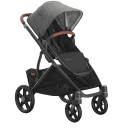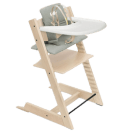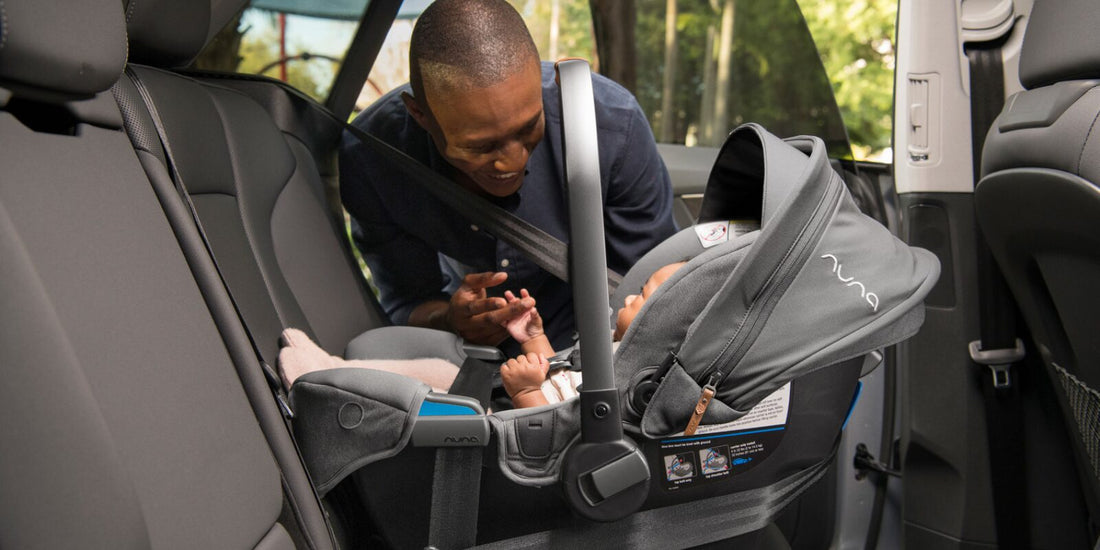
Boy, is the toy creep real: birthdays, holidays, and everyday purchases can fill up your child’s playroom fast. If you’re anything like most parents, you may feel that toys are taking over your home (and life—daily cleanup is no joke). That’s why the simple act of starting a toy rotation is such a game-changer.
Creating a toy rotation may feel overwhelming at first, but it’s a worthwhile pursuit. Not only will your home feel decluttered and better organized—isn’t it satisfying finding something exactly where you expect it to be?—your kiddo will have a renewed excitement for existing toys and won’t say “but there’s nothing here to play with” ever again.
Why Should You Rotate Your Child’s Toys?
Rotating your kiddo’s toys is the most satisfying kind of parent project: good for you (so long, clutter!) and good for them (every toy is new again!). Creating a toy rotation has several benefits, including:
- Novelty and interest. Surely you’ve clocked how quickly your child loses interest in toys they’re constantly playing with. By rotating their toys, you can reintroduce items they haven’t seen for a while, which means they’re automatically more exciting and engaging. It reinvigorates their interest and prevents boredom.
- Organization and decluttering. If you’re short on space or are overwhelmed by toy clutter, rotating toys can help manage the mess. By keeping only a fraction of toys accessible at any given time, you can reduce clutter, keep things organized, and make clean up time easier for everyone.
- Appreciation. When your child has tons of toys available all the time, it’s hard for them to understand or appreciate the value of them. By rotating toys, you help your child anticipate and develop appreciation when a toy suddenly reappears. It encourages your child to engage with their toys more deeply, fostering attachment and gratitude.
- Multi-sensory development. Rotating toys provides your kiddo a variety of play experiences, which support different aspects of your child’s development. Every toy offers unique learning and skill-building opportunities. Some toys will spark creativity, some will engage your child in problem-solving, and others will strengthen fine motor skills.
- Extended lifespan. This one is a no-brainer: the less a toy is played with, the longer it will last. Rotating toys means that toys will experience less wear and tear (boy, do toddlers love to throw things) and increase their longevity.
- Budget friendly. Those off-the-cuff toy purchases can really add up, and it can be especially frustrating to spend on shiny new things that will quickly be forgotten. Rotating toys will help maintain that novelty and save you some bucks.
- Zero kiddo overwhelm. It’s true for grownups and it’s true for kids: humans are simply paralyzed when presented with too many choices. Research demonstrates that spaces with too many toys and play options overstimulate babies and toddlers, and impact their ability to learn and play creatively.
To begin rotating toys effectively, spend a little time creating the rules of the game: consider selecting a specific number of toys to make available at a time, and periodically swap them out with those in storage (we’ve got tips on this, below). How frequently you rotate will depend on your child’s age, interests, and attention span. Observing their engagement and interest with a toy and adjusting the rotation schedule accordingly will help maximize the benefits.
How to Start a Toy Rotation
The playroom toy creep is real, and toy rotation is a great solution for organizing, reducing clutter, and keeping your child’s toys fresh—here’s how to get started:
- Assess the lay of the land. Begin by gathering all your kiddo’s toys from every nook in your home and sort them into categories based on their type, ideal age range, and developmental benefits. Grab bins or boxes for sorting and eventual storage.
- Create a (flexible) rotation schedule. Decide on your frequency of toy rotation based on your child’s age and interest plan. Some parents rotate toys every week, while others do it every month. Consider your child’s preferences and adjust accordingly.
- Declutter. Go ahead and create a donation pile—toys or books that have been outgrown, anything broken or with missing pieces, and age-appropriate toys your child has never engaged with should be donated or thrown away. If you have books or toys that are beyond your child’s current developmental stage, put them in your “to store” pile.
- Declutter again. Now that you’ve sorted toys into like-with-like categories, start figuring out which toys from each type to include in each rotation (it’s a great moment to reconsider donations, too—does your child really need two dozen Barbie dolls?). Aim for a balanced mix of toys that encourage different types of play.
- Organize. Consider your space and storage options. The easier your toy rotation system is to maintain (like designating a bin or cubby for a single type of toy), the happier you will be.
- Store toys not in rotation. Find a storage solution for the toys out of your current rotation—clear plastic bins with viewable contents are the most convenient, but any box or bin will work (just label them well to prevent future headaches).
- Introduce the new rotation. When it’s time to rotate, bring the new batch of selected toys out of storage and make them accessible in your play area, wherever that may be. Remove the previous rotation under the cover of night, and store them for a future rotation.
- Sit back and observe. Watch how your child interacts and plays with their newly introduced toys. Allow them to see you play with toys so they’re able to model your behavior, but then let play become self-guided, and make every effort to avoid interrupting or “correcting.” Encourage independent play, and provide gentle guidance, if needed.
- Look for trends. Pay attention to which toys your child gravitates towards and spends more time playing with to help inform toy selections in your next rotation.
- Rotate toys on your schedule. Stick to your established schedule, and make sure those stored toys aren’t sneaking out. If you see your child getting bored, or you’re spending a lot of time cleaning up, you may need to reevaluate your current toy selection.
- Adjust and experiment. Be flexible and willing to make adjustments based on your child’s current interests, favorites, or the mastering of a new skill. If certain toys consistently fail to engage your child, replace them (and consider donating them to avoid the clutter creep).
- Rinse and repeat. Continue your toy rotation journey, regularly evaluating and refreshing the toy selection to keep your child’s playtime engaging and exciting. Remember, the goal is to have fun!
The goal of toy rotation is to provide variety and to keep your child’s toy selection fresh, stimulating your child’s imagination, creativity, and willingness to explore. By creating a toy rotation, you’ll create a more enriching play environment while managing clutter and keeping your home organized.
Finding What’s Right for You
Albee Baby is the oldest family-owned specialty baby shop in the US, and we pride ourselves on providing our customers with the best assortment of baby products anywhere, at fair prices, always. We’re committed to being an inclusive resource for parents, and hope you’re feeling empowered to find the right baby gear for your family. Still have questions? Feel free to contact our baby gear experts at 877.692.5233 or by email at info@albeebaby.com.
 Car Seat Sale
Car Seat Sale
 Stroller Sale
Stroller Sale
 Home Sale
Home Sale
 Feeding Sale
Feeding Sale
 Activity & Entertainment Sale
Activity & Entertainment Sale
 Bath & Potty Sale
Bath & Potty Sale






 Car Seats
>
Car Seats
>
 Strollers
>
Strollers
>
 Cribs
Cribs
 High Chairs
High Chairs
 Baby Carriers
Baby Carriers
 Travel Cribs & Playards
Travel Cribs & Playards
 Wagons
Wagons
 Home
>
Home
>
 Bath & Potty
>
Bath & Potty
>
 Diaper Bags & Backpacks
Diaper Bags & Backpacks
 Toys
>
Toys
>
 Gifts
>
Gifts
>
 Clothing
>
Clothing
>

















 Infant Car Seats
Infant Car Seats
 Convertible Car Seats
Convertible Car Seats
 All-in-One Car Seats
All-in-One Car Seats
 Booster Car Seats
>
Booster Car Seats
>
 Travel Systems
Travel Systems
 Car Seat Accessories
Car Seat Accessories
 Single Strollers
Single Strollers
 Double Strollers
Double Strollers
 Single-to-Double Strollers
Single-to-Double Strollers
 Lightweight & Compact Strollers
Lightweight & Compact Strollers
 Jogging Strollers
Jogging Strollers
 Bicycle Trailers & Child Seats
Bicycle Trailers & Child Seats
 Stroller Accessories
Stroller Accessories
 Stroller Frames
Stroller Frames



































